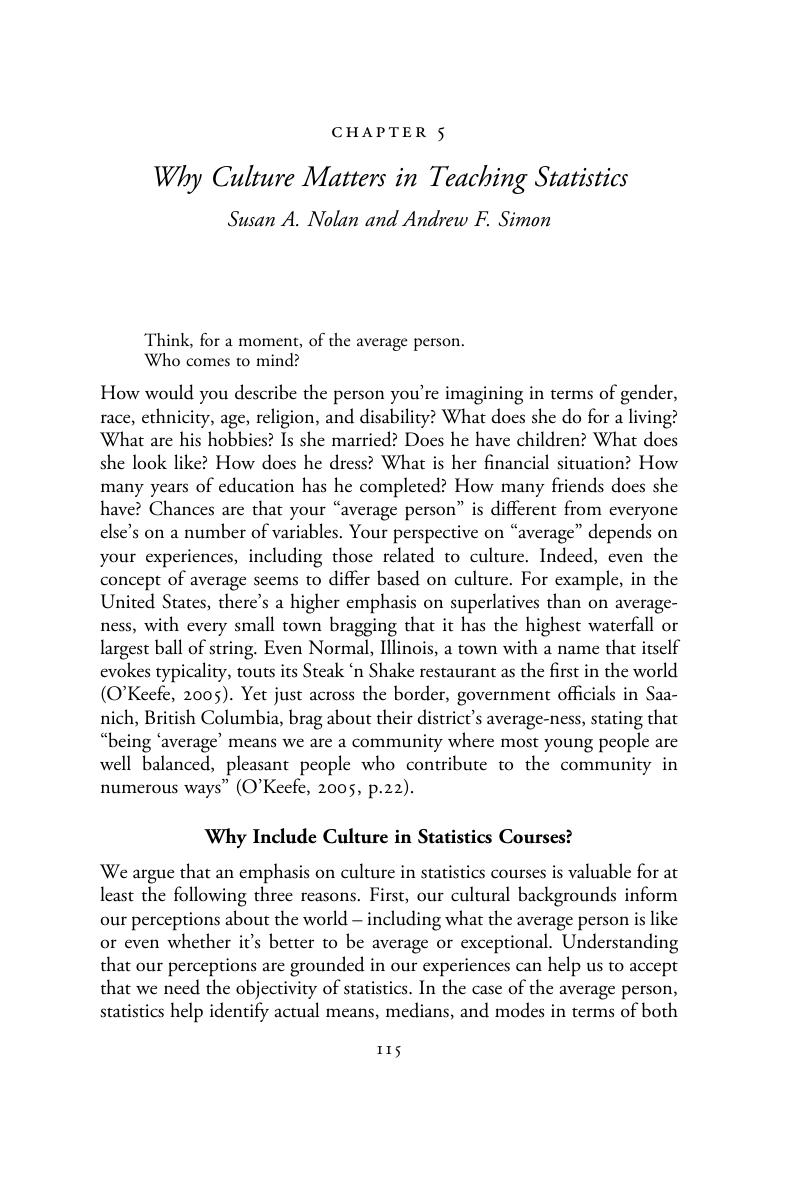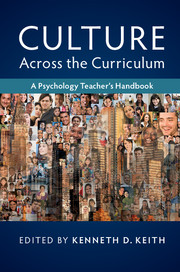Book contents
- Culture Across the Curriculum
- Culture and Psychology
- Culture Across the Curriculum
- Copyright page
- Dedication
- Contents
- Figures
- Tables
- Contributors
- Foreword
- Preface
- Acknowledgments
- Prologue
- Part I Basic Concepts
- Part II Teaching across the Psychology Curriculum
- In the Beginning
- Research and Statistics
- Chapter 5 Why Culture Matters in Teaching Statistics
- Chapter 6 Approaches to Culture-Oriented Research and Teaching
- Chapter 7 Teaching Psychological Measurement: Taking into Account Cross-Cultural Comparability and Cultural Sensitivity
- Biological Connections
- Development
- Cognition
- Social Psychology
- Health and Well-Being
- Personality, Disability, and Disorders
- Epilogue
- Index
- References
Chapter 5 - Why Culture Matters in Teaching Statistics
from Research and Statistics
Published online by Cambridge University Press: 30 March 2018
- Culture Across the Curriculum
- Culture and Psychology
- Culture Across the Curriculum
- Copyright page
- Dedication
- Contents
- Figures
- Tables
- Contributors
- Foreword
- Preface
- Acknowledgments
- Prologue
- Part I Basic Concepts
- Part II Teaching across the Psychology Curriculum
- In the Beginning
- Research and Statistics
- Chapter 5 Why Culture Matters in Teaching Statistics
- Chapter 6 Approaches to Culture-Oriented Research and Teaching
- Chapter 7 Teaching Psychological Measurement: Taking into Account Cross-Cultural Comparability and Cultural Sensitivity
- Biological Connections
- Development
- Cognition
- Social Psychology
- Health and Well-Being
- Personality, Disability, and Disorders
- Epilogue
- Index
- References
Summary

- Type
- Chapter
- Information
- Culture across the CurriculumA Psychology Teacher's Handbook, pp. 115 - 133Publisher: Cambridge University PressPrint publication year: 2018



